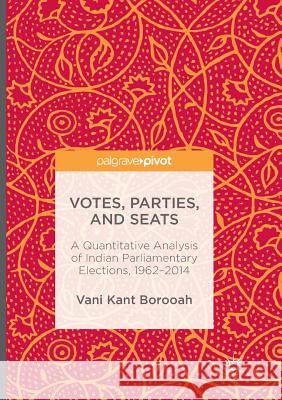Votes, Parties, and Seats: A Quantitative Analysis of Indian Parliamentary Elections, 1962-2014 » książka
topmenu
Votes, Parties, and Seats: A Quantitative Analysis of Indian Parliamentary Elections, 1962-2014
ISBN-13: 9783319808239 / Angielski / Miękka / 2018 / 160 str.
Votes, Parties, and Seats: A Quantitative Analysis of Indian Parliamentary Elections, 1962-2014
ISBN-13: 9783319808239 / Angielski / Miękka / 2018 / 160 str.
cena 196,31 zł
(netto: 186,96 VAT: 5%)
Najniższa cena z 30 dni: 192,74 zł
(netto: 186,96 VAT: 5%)
Najniższa cena z 30 dni: 192,74 zł
Termin realizacji zamówienia:
ok. 20 dni roboczych.
ok. 20 dni roboczych.
Darmowa dostawa!
Kategorie:
Kategorie BISAC:
Wydawca:
Palgrave MacMillan
Język:
Angielski
ISBN-13:
9783319808239
Rok wydania:
2018
Wydanie:
Softcover Repri
Ilość stron:
160
Waga:
0.22 kg
Wymiary:
21.01 x 14.81 x 0.97
Oprawa:
Miękka
Wolumenów:
01
Dodatkowe informacje:
Wydanie ilustrowane











